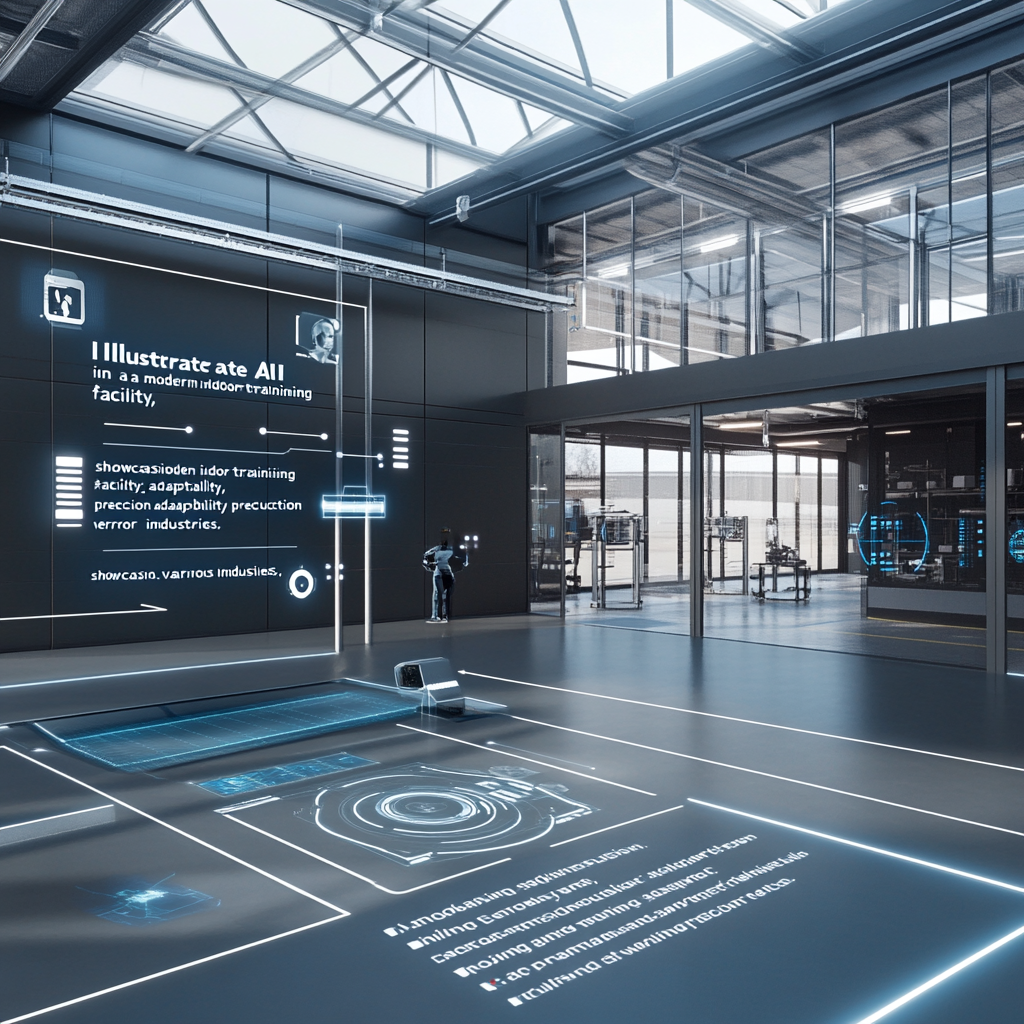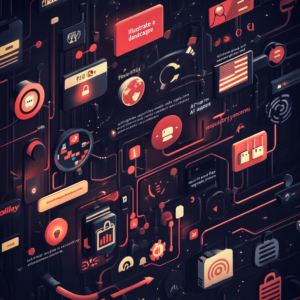
“Revolutionizing AI Performance: The Impact of Indoor Training on Agent Precision and Adaptability”
The Indoor Training Effect: A Game Changer for AI Agents
Let’s unwrap the fascinating concept of indoor training for AI agents, a concept that’s sweeping the tech world and could very well change how we perceive artificial intelligence. Buckle up; it’s a ride that promises both essential facts and a sprinkle of entertainment.
Here's the deal: in the realm of artificial intelligence, indoor training is not just a catchy phrase thrown around by techies in dark basements. Oh no, my friends. It represents a revolutionary approach that enhances the way AI agents learn and operate, especially when the world outside looks chaotic and messy—think of it as giving AI agents a cozy room where they can hone their skills without the unnecessary drama of the outside world creeping in. And frankly, isn't that something we all could use sometimes?
What Exactly is Indoor Training for AI Agents?
This method involves training AI agents in controlled environments—basically, creating custom simulations that mimic real-world scenarios. Think of it as setting up a training camp for AI, where every variable can be manipulated with surgical precision. You wouldn't put a rookie athlete straight into the big leagues without some training, right? Similarly, AI agents thrive when given the chance to train in a space where conditions are predictable and manageable.
Why is this important? Well, traditional training methods often throw assets into the lion's den of unpredictability. They encounter a plethora of external variables that can tar and feather their performance. That’s like feeding a baby their first solid food while placing them in a bouncy castle. You might get a messy situation, and no one wants that!
The Need for Indoor Training: A Safety Net
The beauty of indoor training lies in its controlled setting. Tuning out the noise and chaos allows AI agents to flourish. In this safe laboratory, developers can meticulously manage parameters, honing the AI’s ability to learn from precisely designed simulations. And let’s face it: less noise equals fewer tantrums—not just for toddlers but for our AI friends too!
Key Benefits of Indoor Training: A Buffet of Advantages
Enhanced Adaptability
Much like the stars of a reality TV show who can adapt to twists and turns, AI agents also need to flex their muscles in various scenarios. Indoor training allows them to encounter a variety of set-ups that better prepare them for the wild world out there. Imagine if an AI agent trained like a champion before being thrown into a live customer support situation—smooth sailing, right?
Improved Precision
When it comes to accuracy, indoor-trained AI agents are like rock-solid marksmen. Developers can provide consistent feedback, making sure the AI knows what to do without second-guessing. Let’s be honest, we all feel a bit fuzzy when given ambiguous instructions. Now, imagine an AI navigating this minutia with pinpoint accuracy in industries requiring terrific precision: data entry, medical recommendations, you name it.
Reduced Errors
Errors? Who needs them? In a well-controlled environment, the risk of the AI misinterpreting instructions or getting lost in a sea of vague phrases evaporates like ice cream on a summer day. Basic clarity goes a long way in ensuring AI agents perform tasks without turning into the digital equivalent of a confused cat chasing its own tail.
How Does Indoor Training Work? The Secret Sauce
Structured Prompting
Just as a cook needs a recipe to bake a cake, AI requires structured prompting to ensure the right actions are taken in the right way. This method is all about organizing prompts logically—kind of like setting the table before the meal. Clear, concise instructions ensure the AI knows exactly what is expected of it. You wouldn't want your AI to serve up a soufflé when a simple omelet is on the menu!
Context and Instructions
The first secret ingredient in the training recipe is context. The AI must understand what it’s dealing with, much like a detective piecing together clues. Providing specific information about the task's environment sets the stage for success. For instance, when scheduling meetings, maybe it needs to know to prioritize department heads over endless Zoom calls with interns.
Next up, the instructions: clear and to the point—as if you were handing someone a recipe without any of that unnecessary fluff. We’ve all seen complicated recipes that leave us scratching our heads. The clearer the instructions, the better the performance—no brain fog allowed!
Tools and Resources
Finally, let’s not forget the charming tools and resources! Just as a knight wouldn’t go to battle without a trusty sword, an AI needs its essential tools to do the job right. This includes defining tokens and ensuring budget-friendly operations—basically, making sure it has everything it needs to shine.
Real-World Applications: The Proof Is in the Pudding
Let’s dip our toes into some exciting real-world examples of this indoor training effect. Spoiler alert: it’s not just a bunch of nerds in lab coats swinging data around.
Customer Support
AI agents trained in these mystical indoor environments are taking customer support to new heights. They’re able to handle inquiries with more finesse than a well-trained butler. When you think about it, nothing is worse than a robot that sounds all kinds of confused; indoor training ensures smooth interactions and consistent responses, ensuring customers leave happy and satisfied.
Healthcare
In the health-care realm, AI agents are becoming the equivalent of experienced doctors. They can make precise diagnoses and provide recommendations while minimizing error risks—your imaginary surgeon will thank you. An AI aware of the quirks of human biology, with indoor training behind it, could save lives.
Automation
Automation is another area where indoor-trained AI agents shine. From data entry to lead qualification, these agents can perform complex tasks with bewildering reliability. Think of it: a stress-free workplace where machines handle the monotonous tasks while you focus on more important, higher-level decisions.
Conclusion: The Future is Bright (and Indoor)
So there you have it, the indoor training effect for AI agents is not just a passing fad; it’s a fundamental shift in how we prepare AI for action. This controlled environment heralds a future where adaptability, precision, and unwavering reliability take center stage—just like the most skilled performers in a well-rehearsed play.
As AI continues to infiltrate various parts of our lives—creating possibilities that once belonged solely in the realm of sci-fi—indoor training will be indispensable in helping these agents navigate the complexities of the real world. Isn't it wonderful to imagine a future where our AI companions can operate successfully in chaos, all thanks to a bit of good old-fashioned training?
Want to stay up to date with the latest news on neural networks and automation? Subscribe to our Telegram channel: @ethicadvizor.

